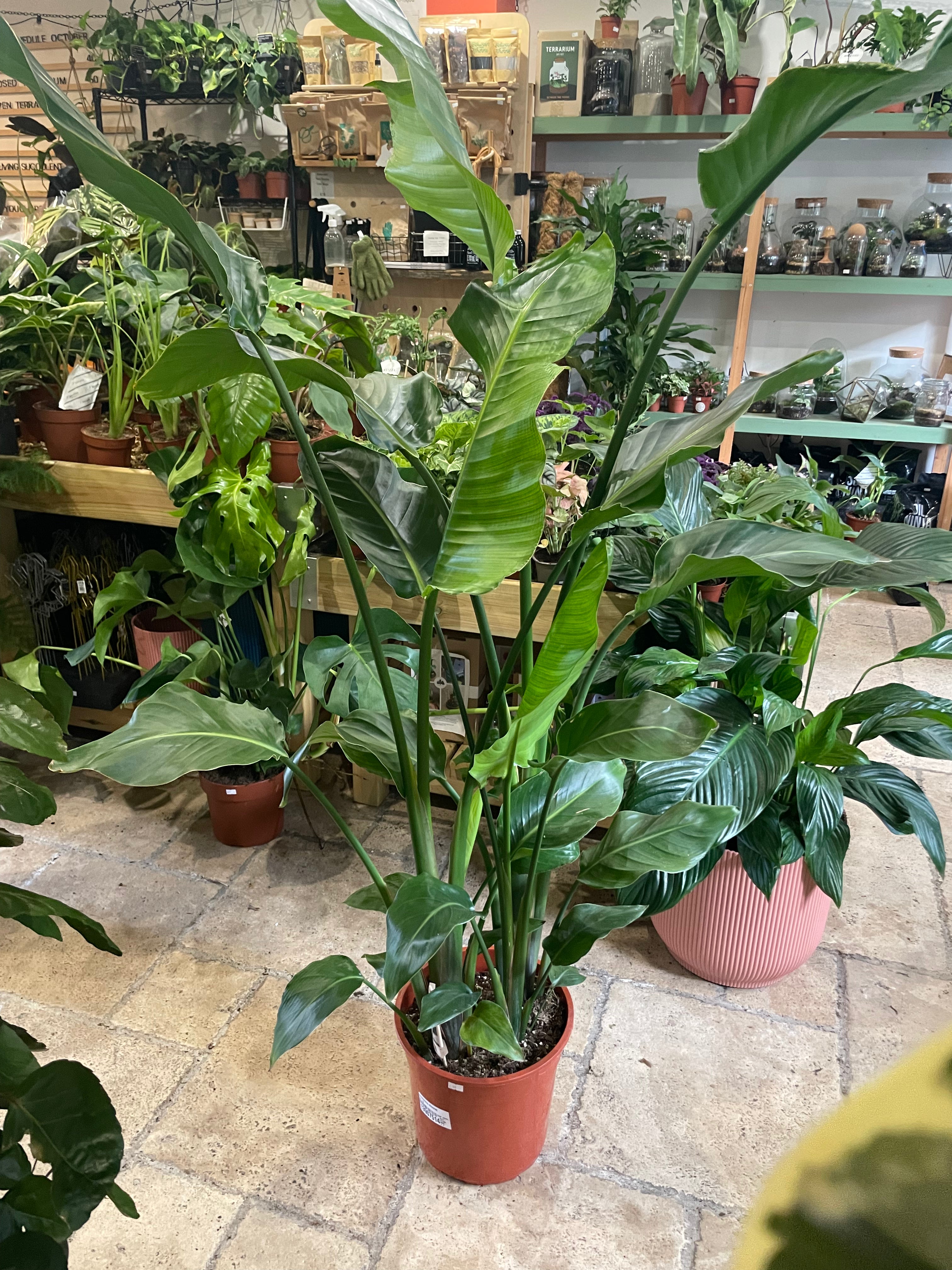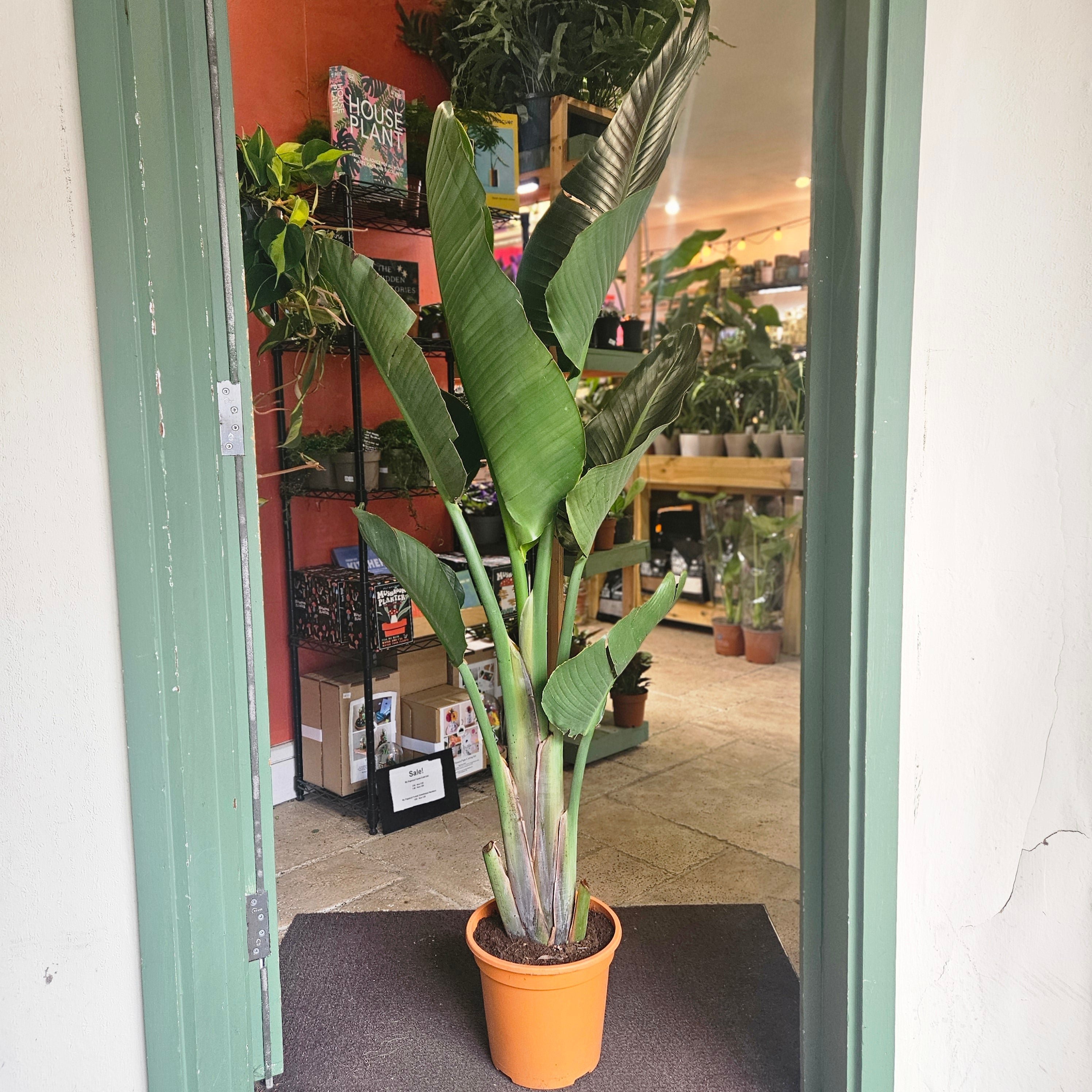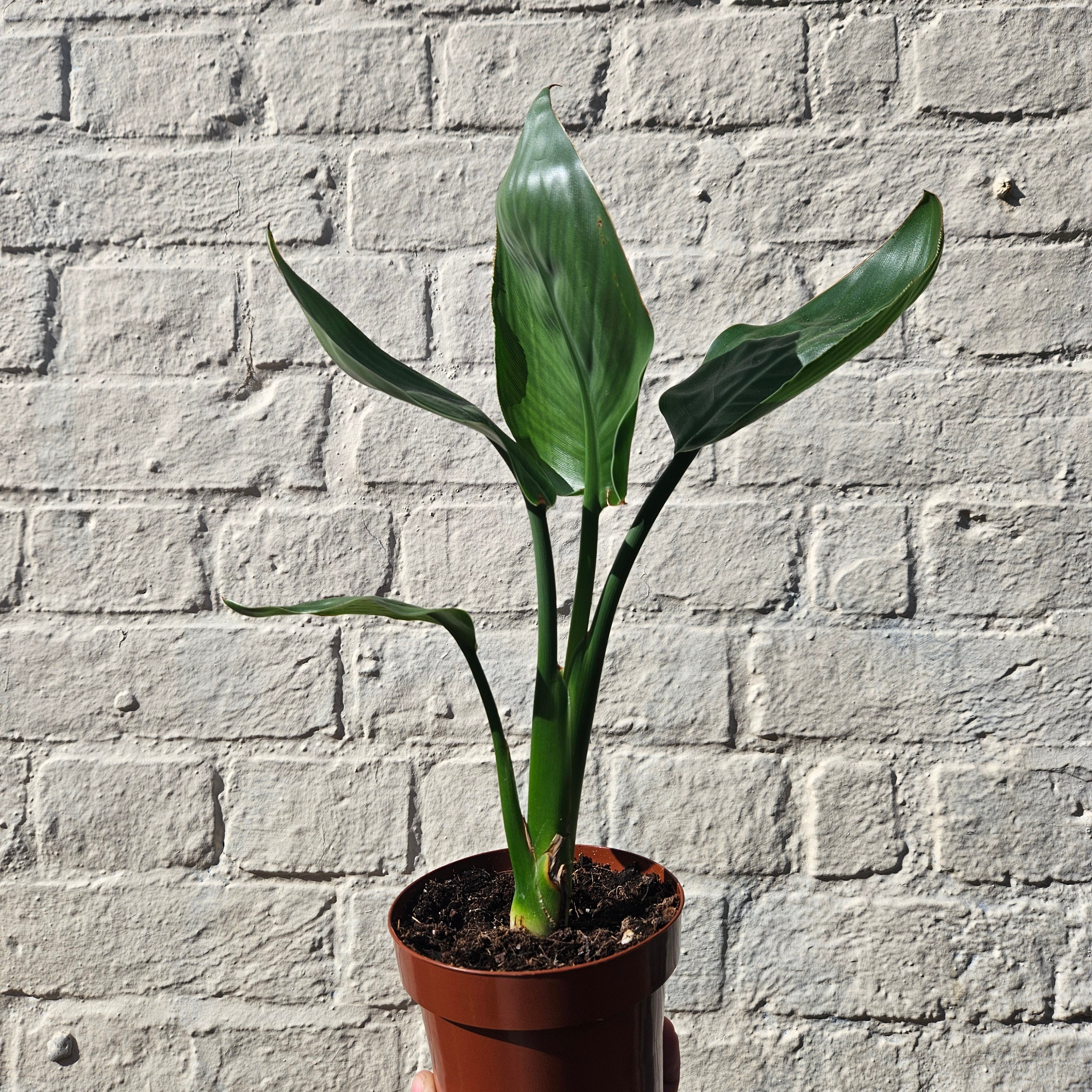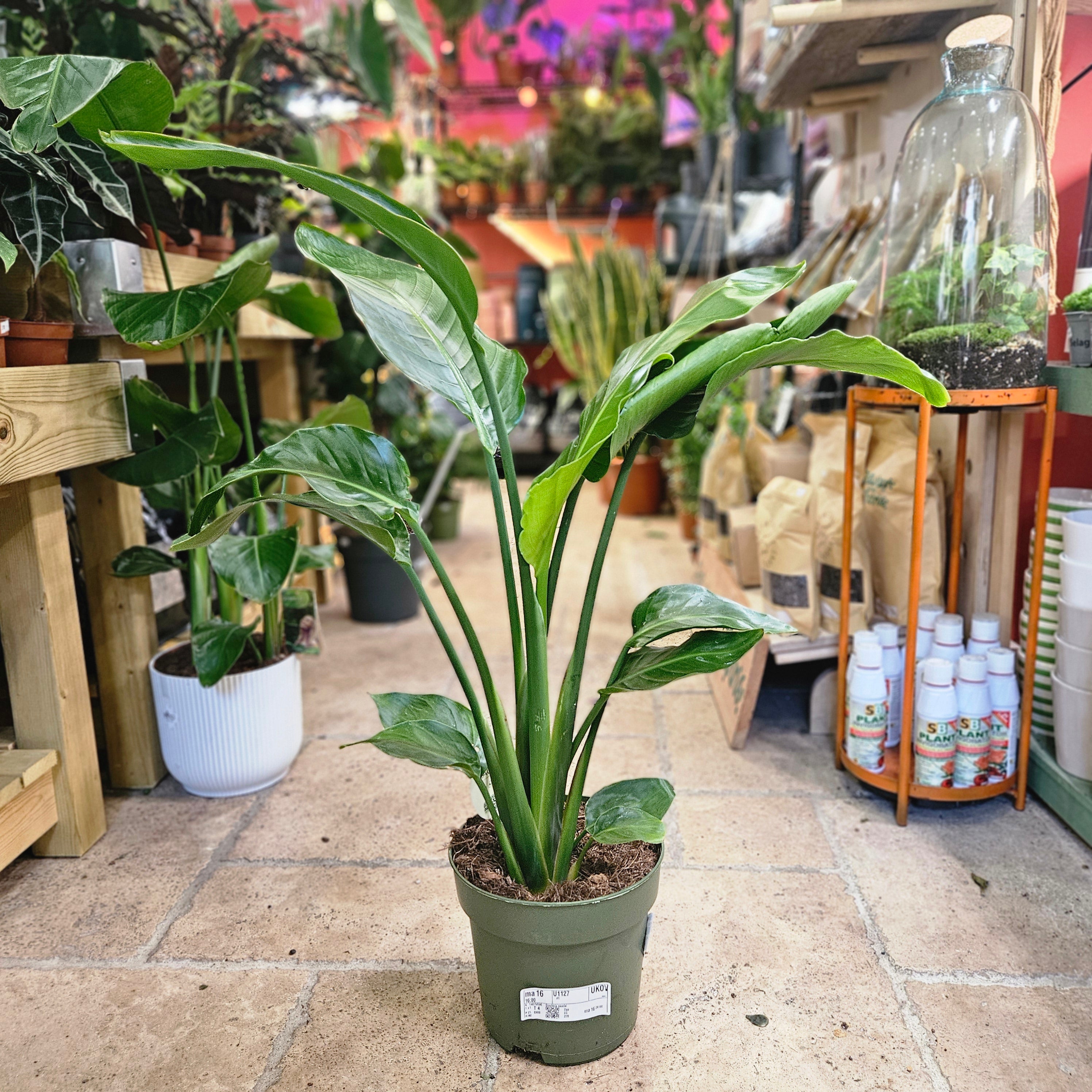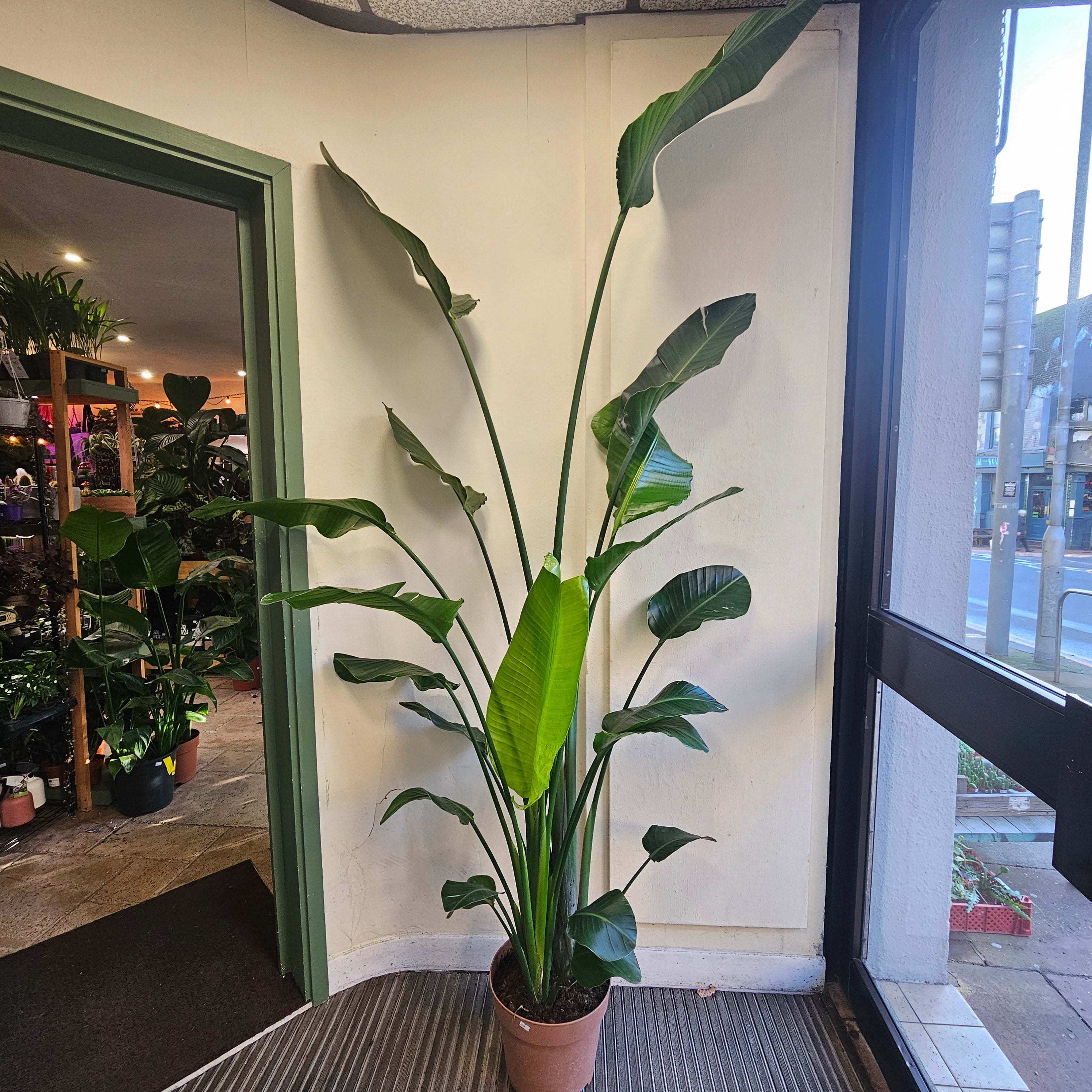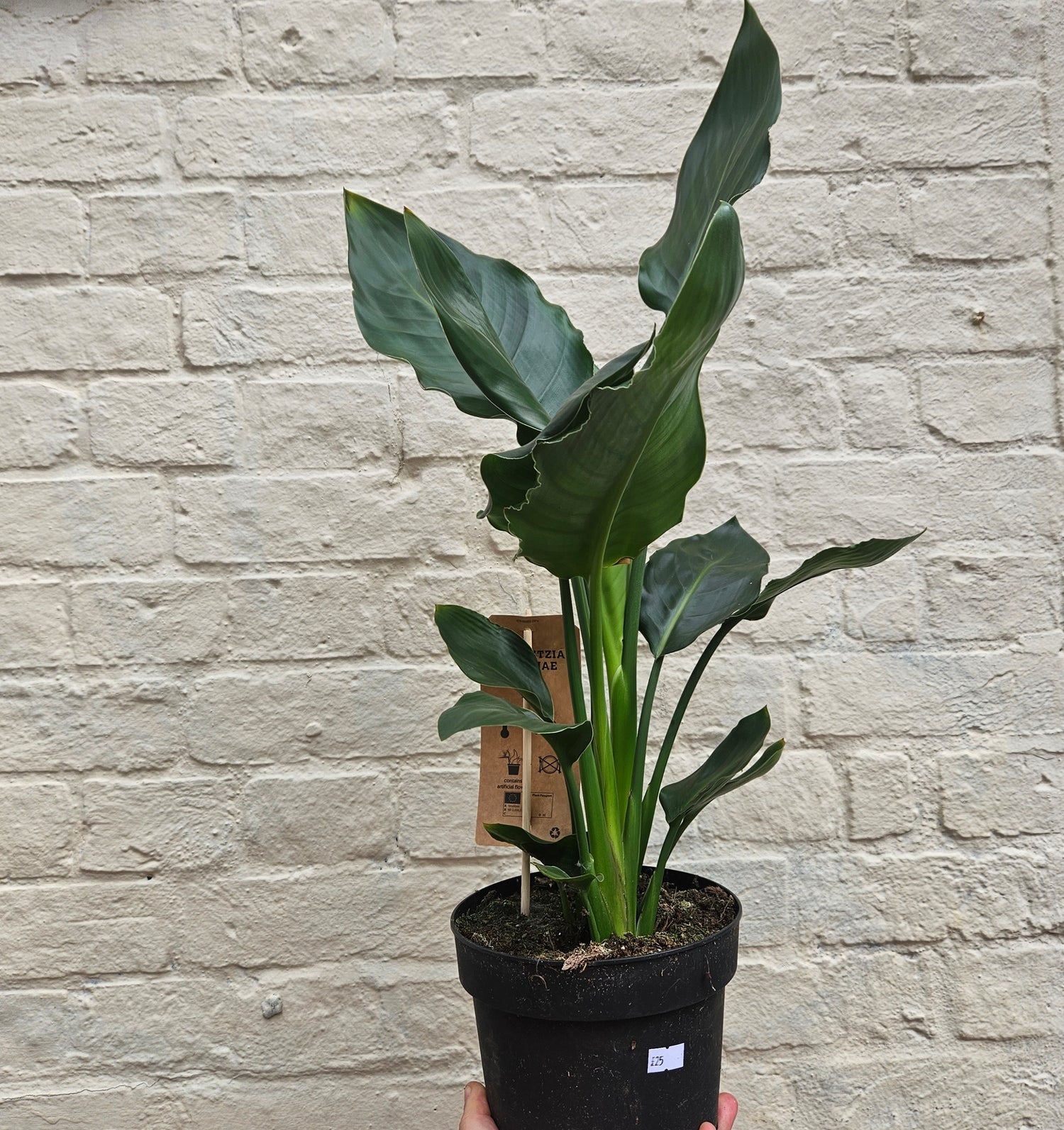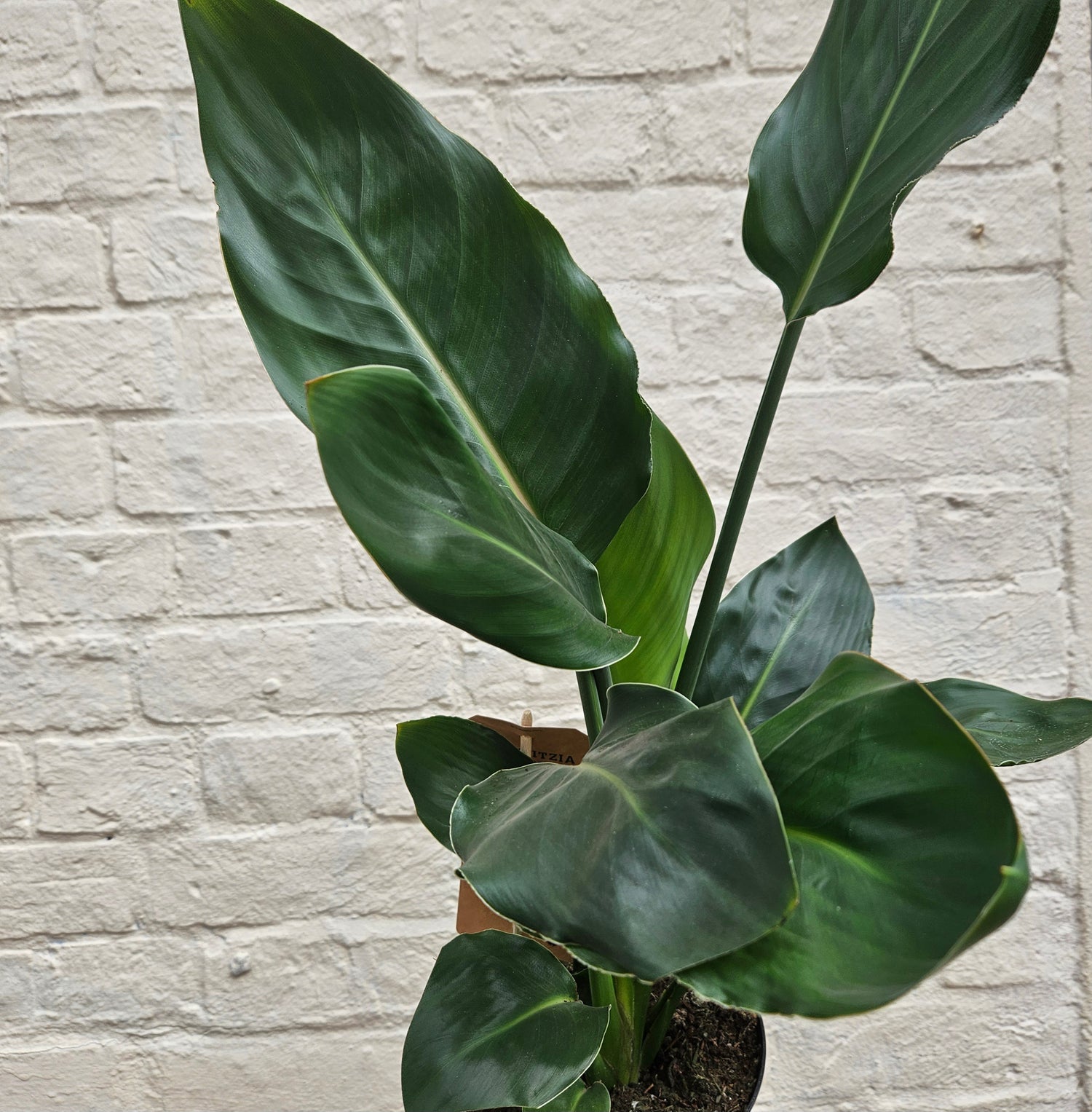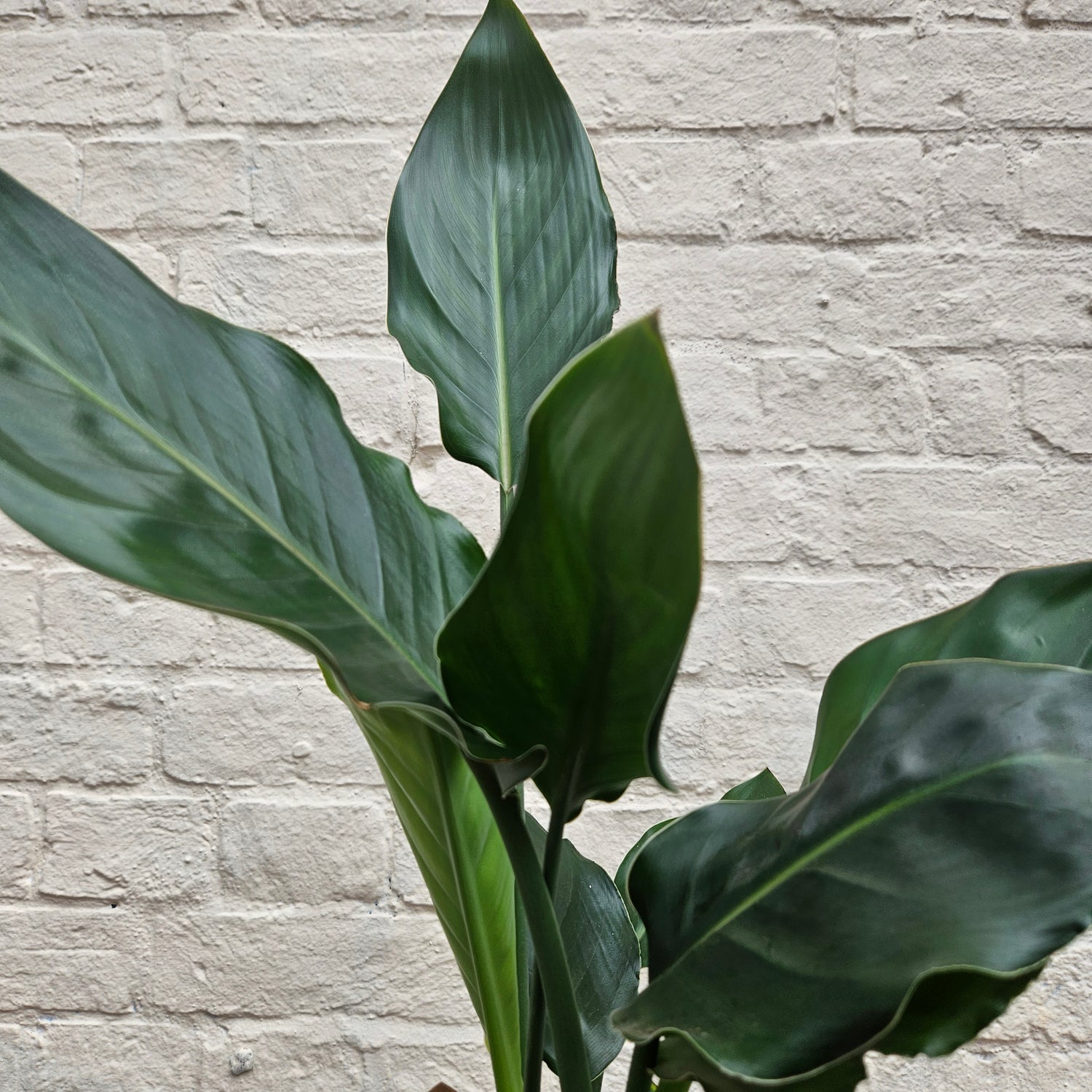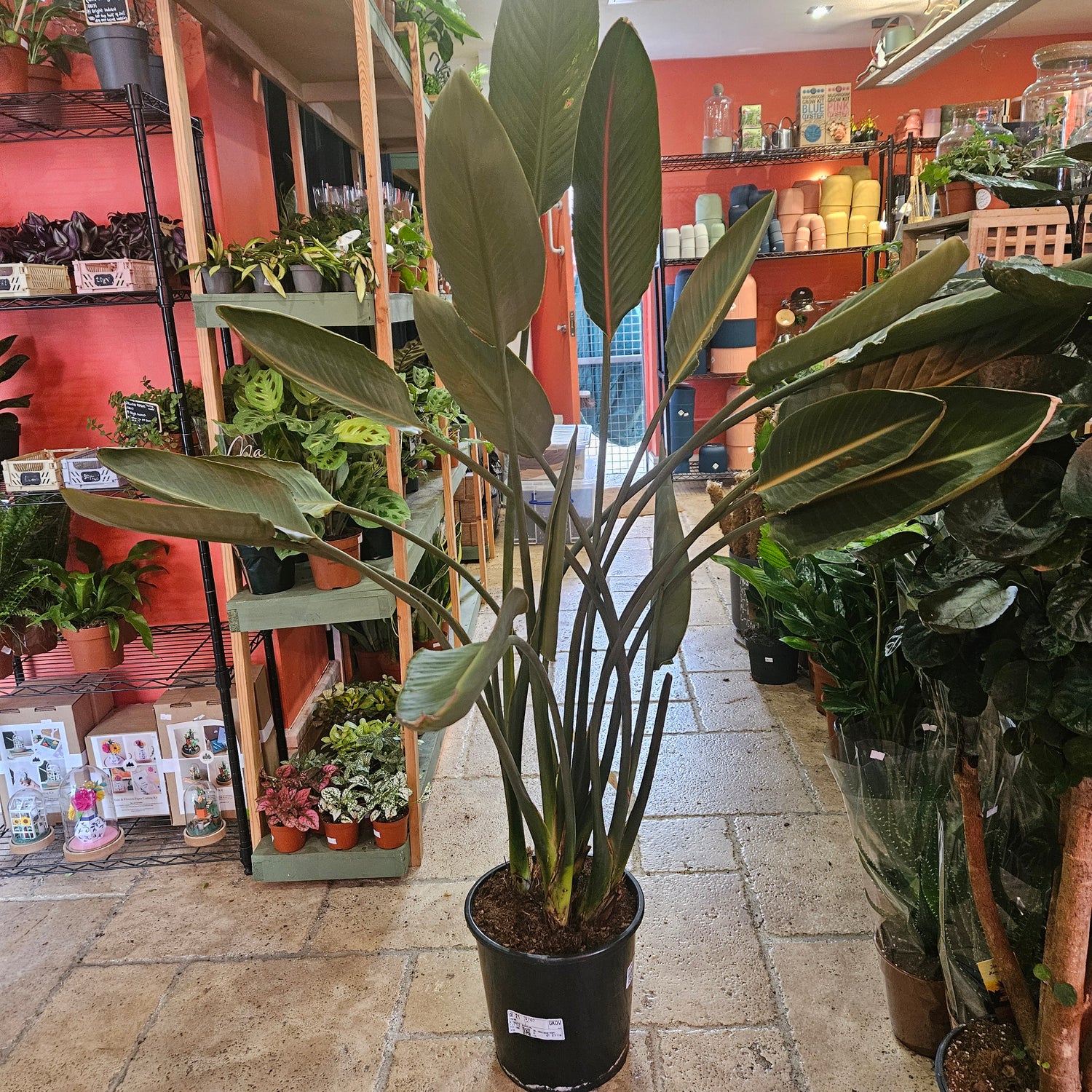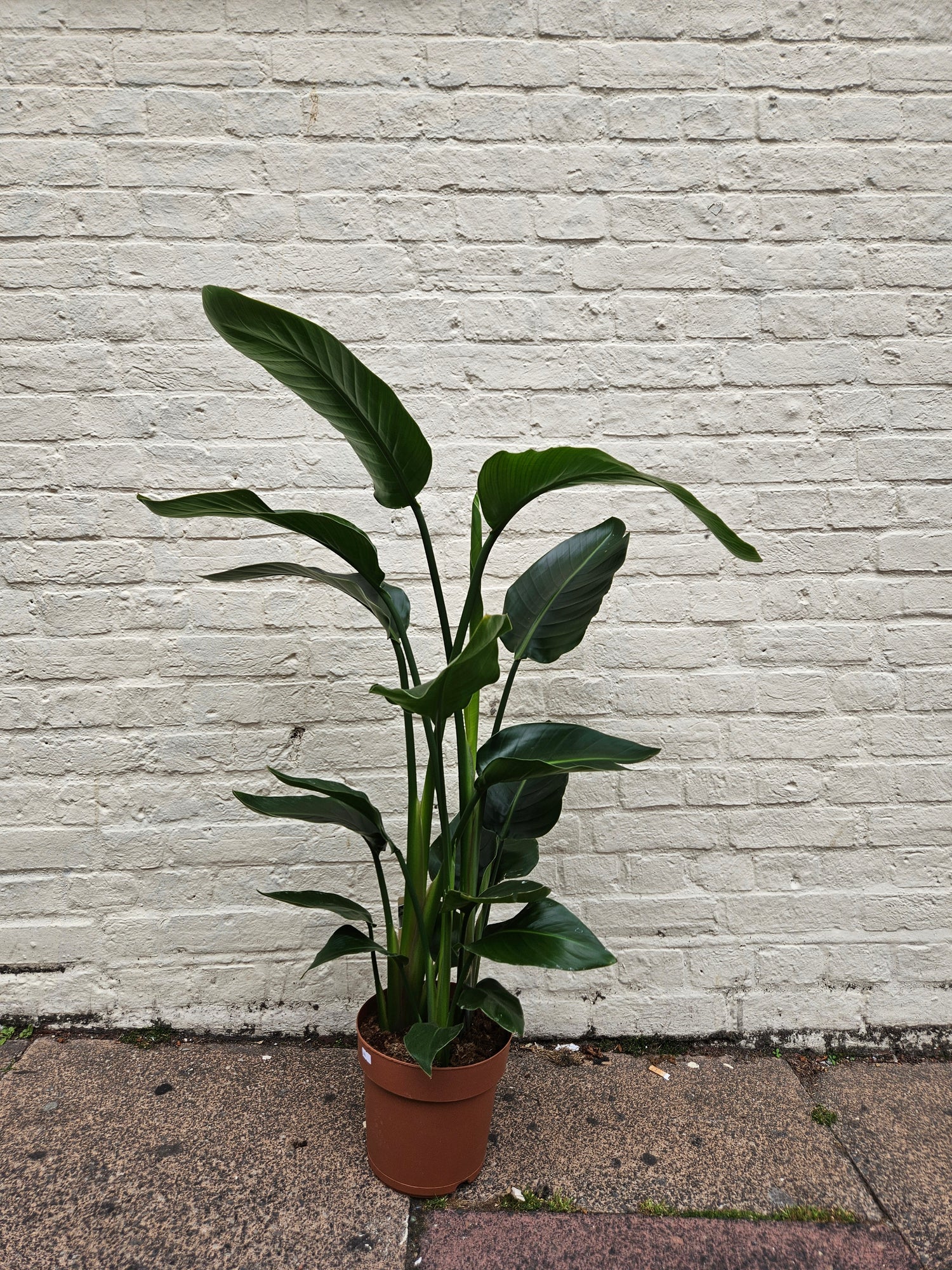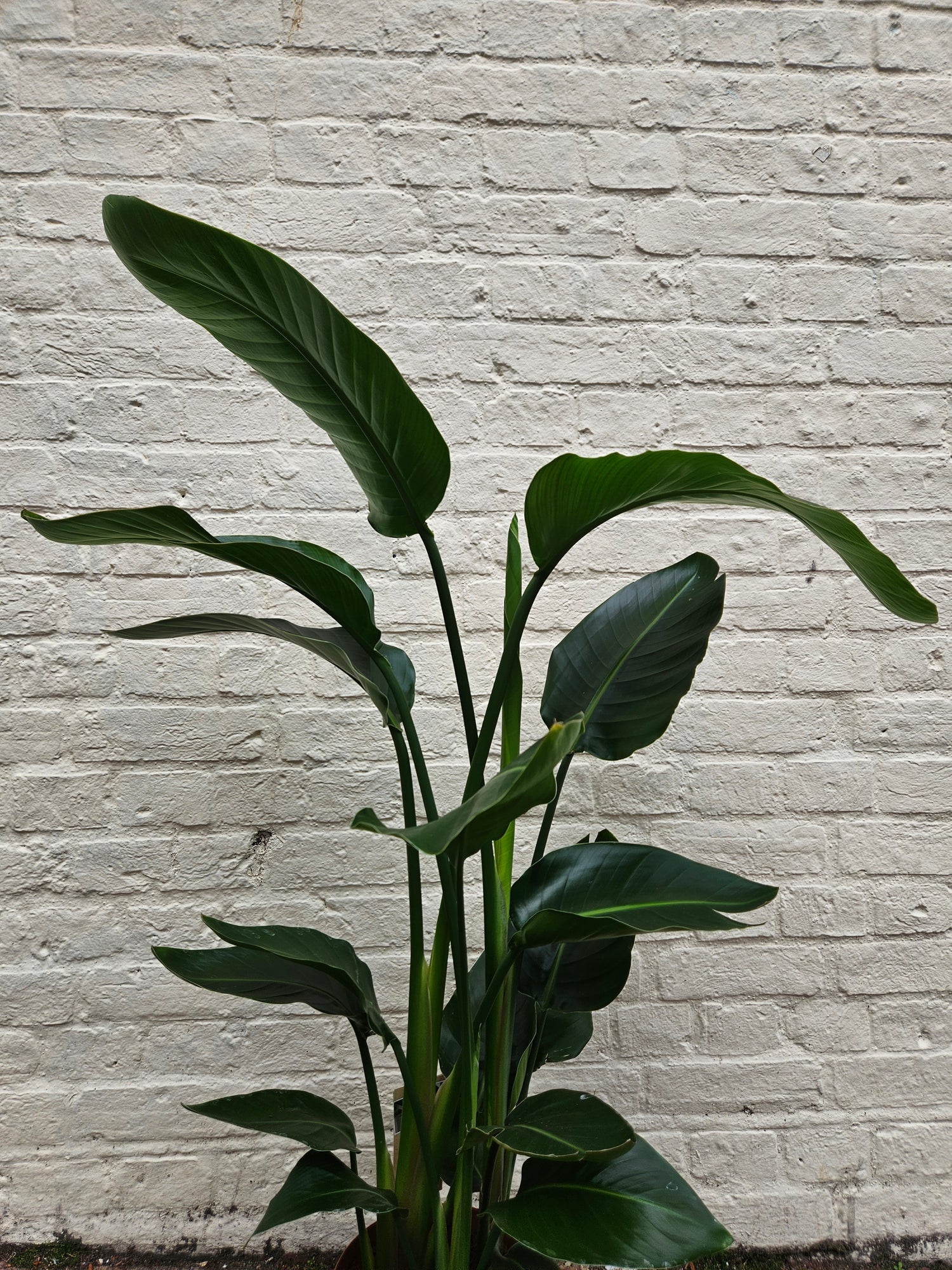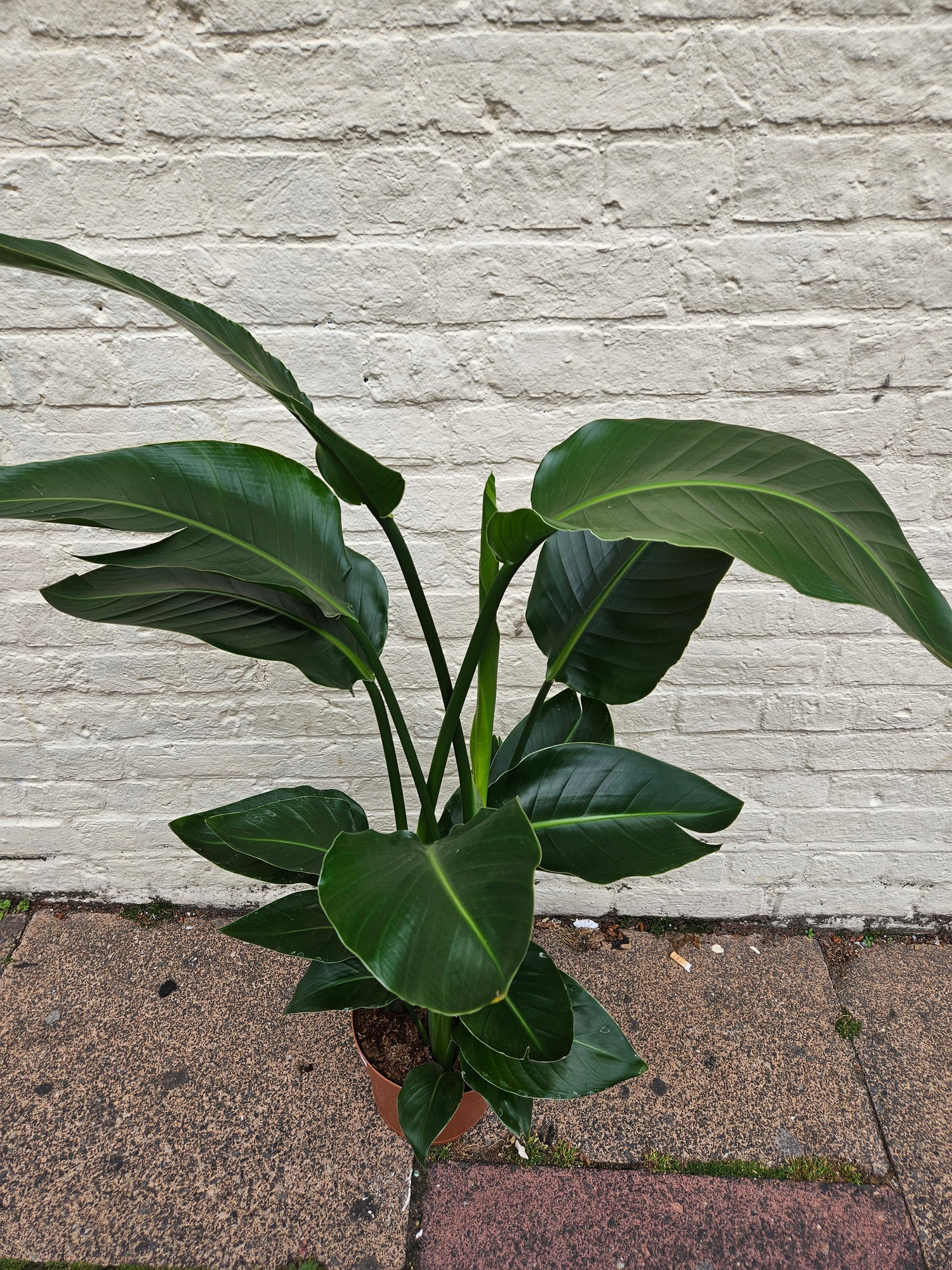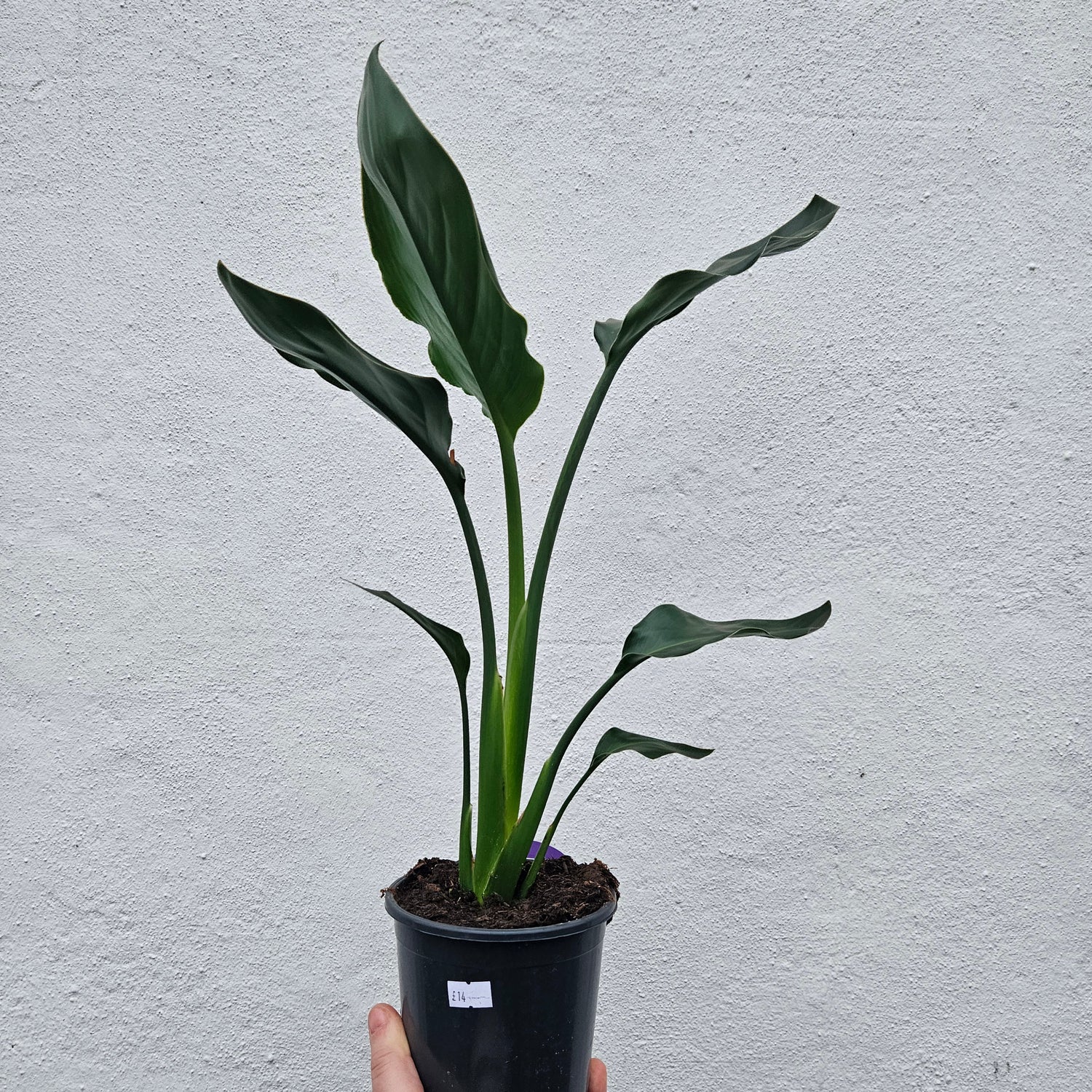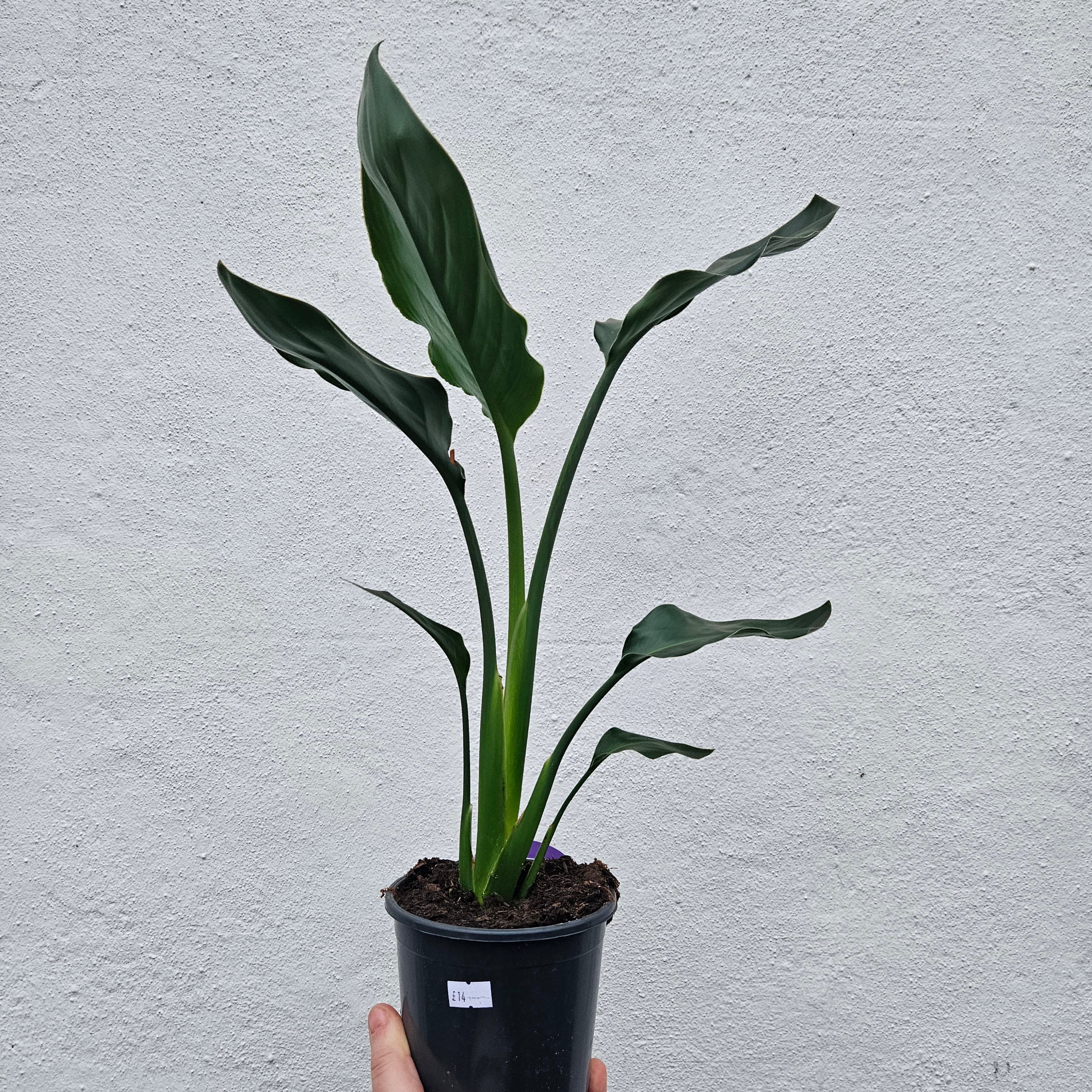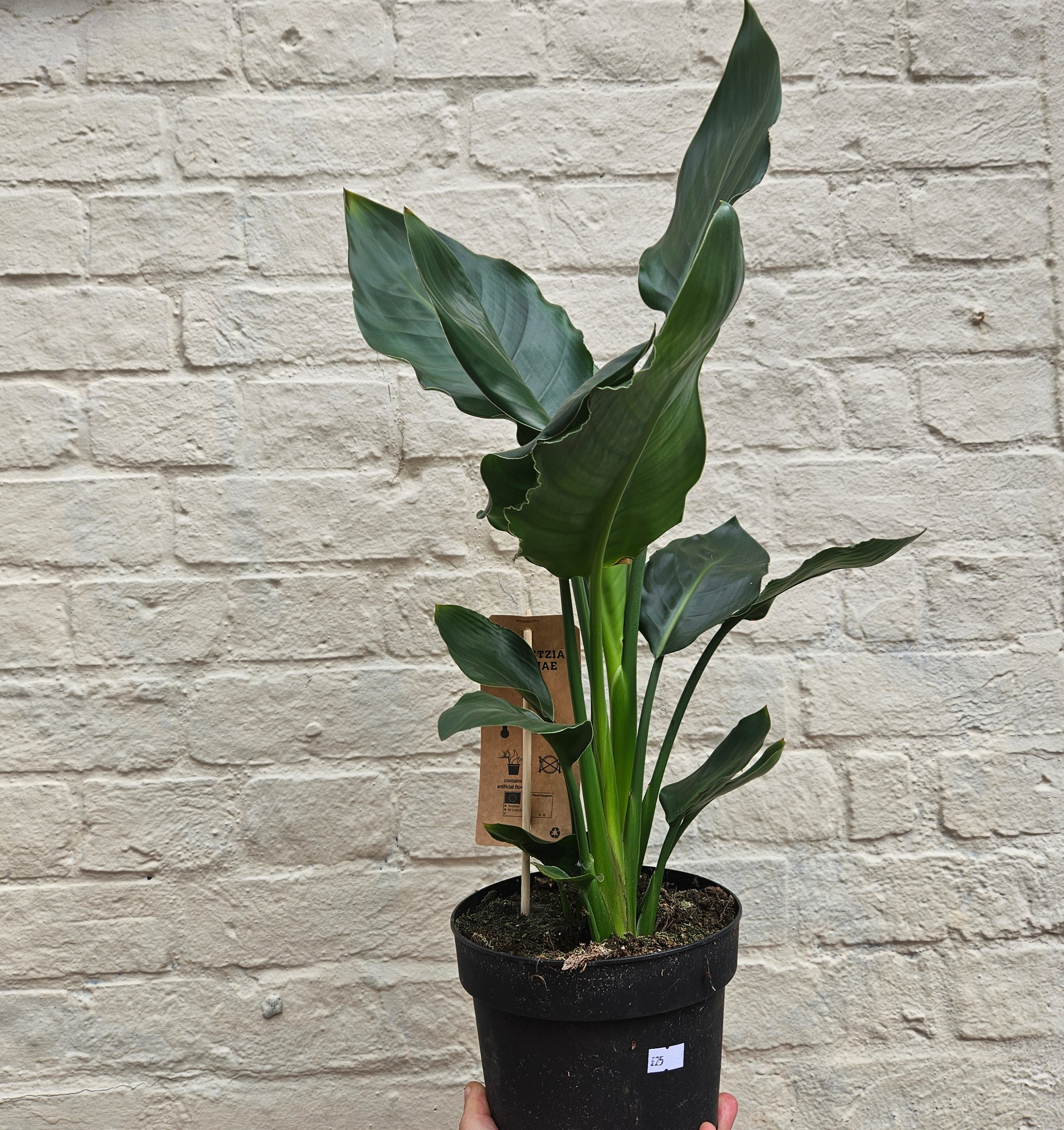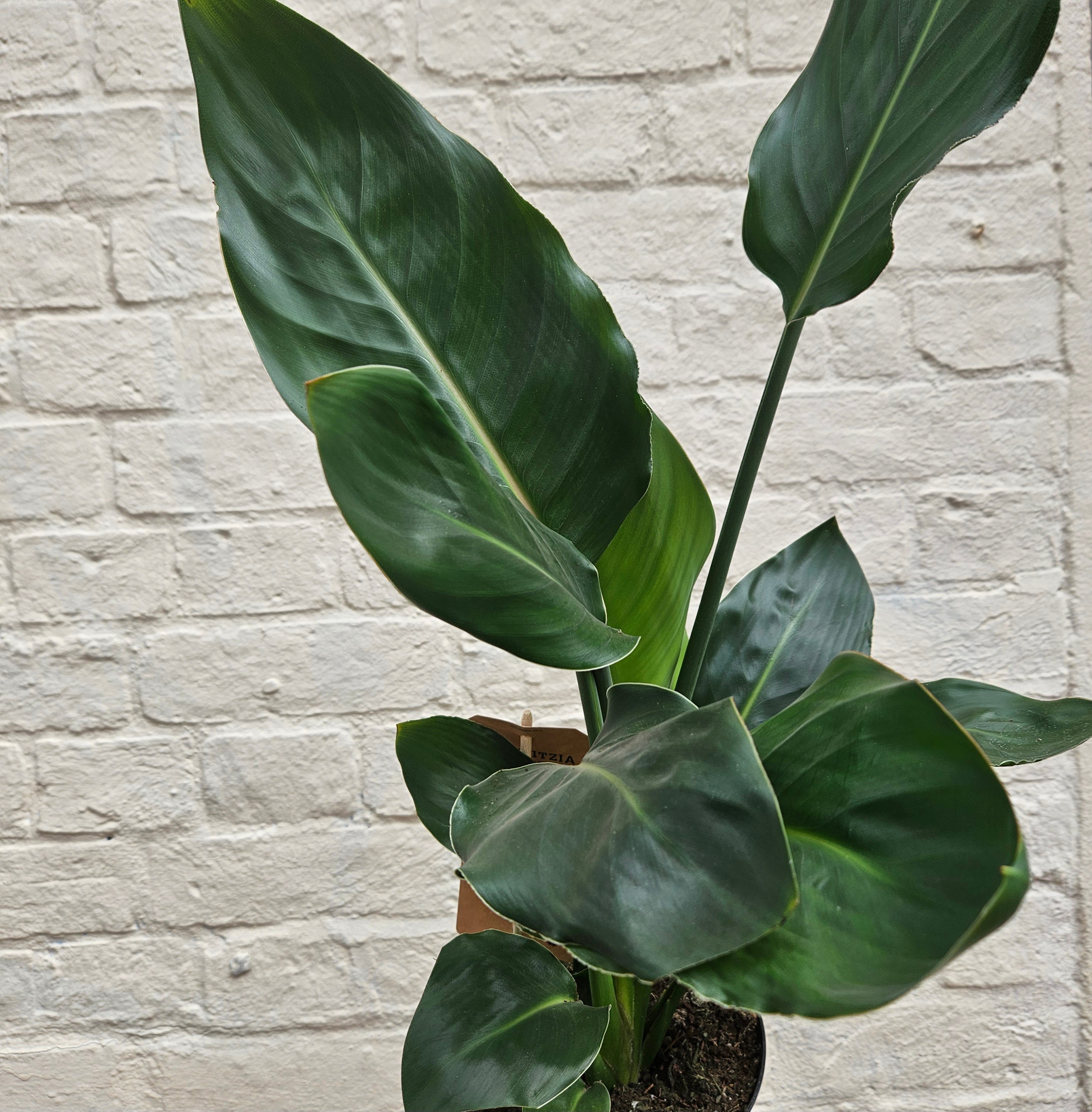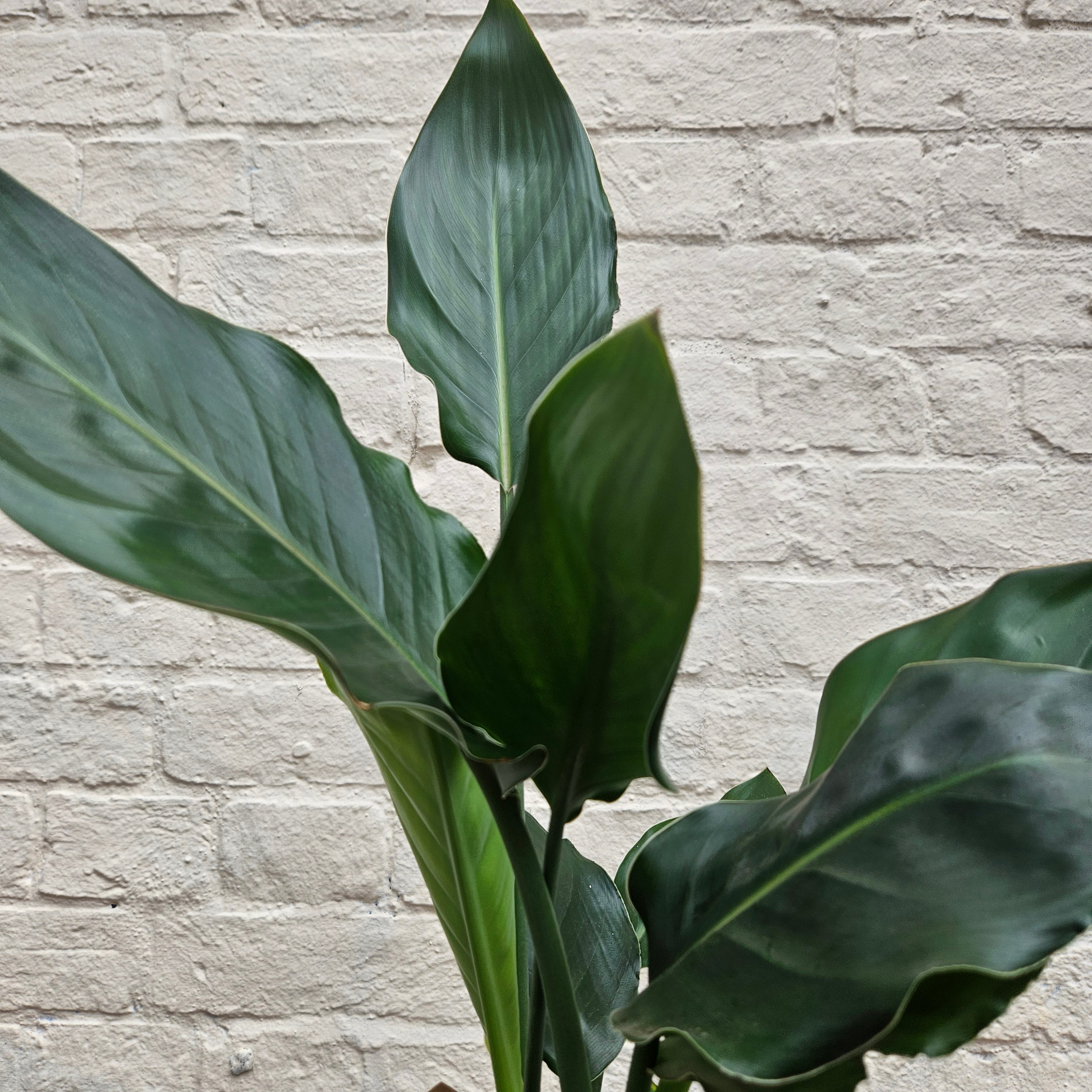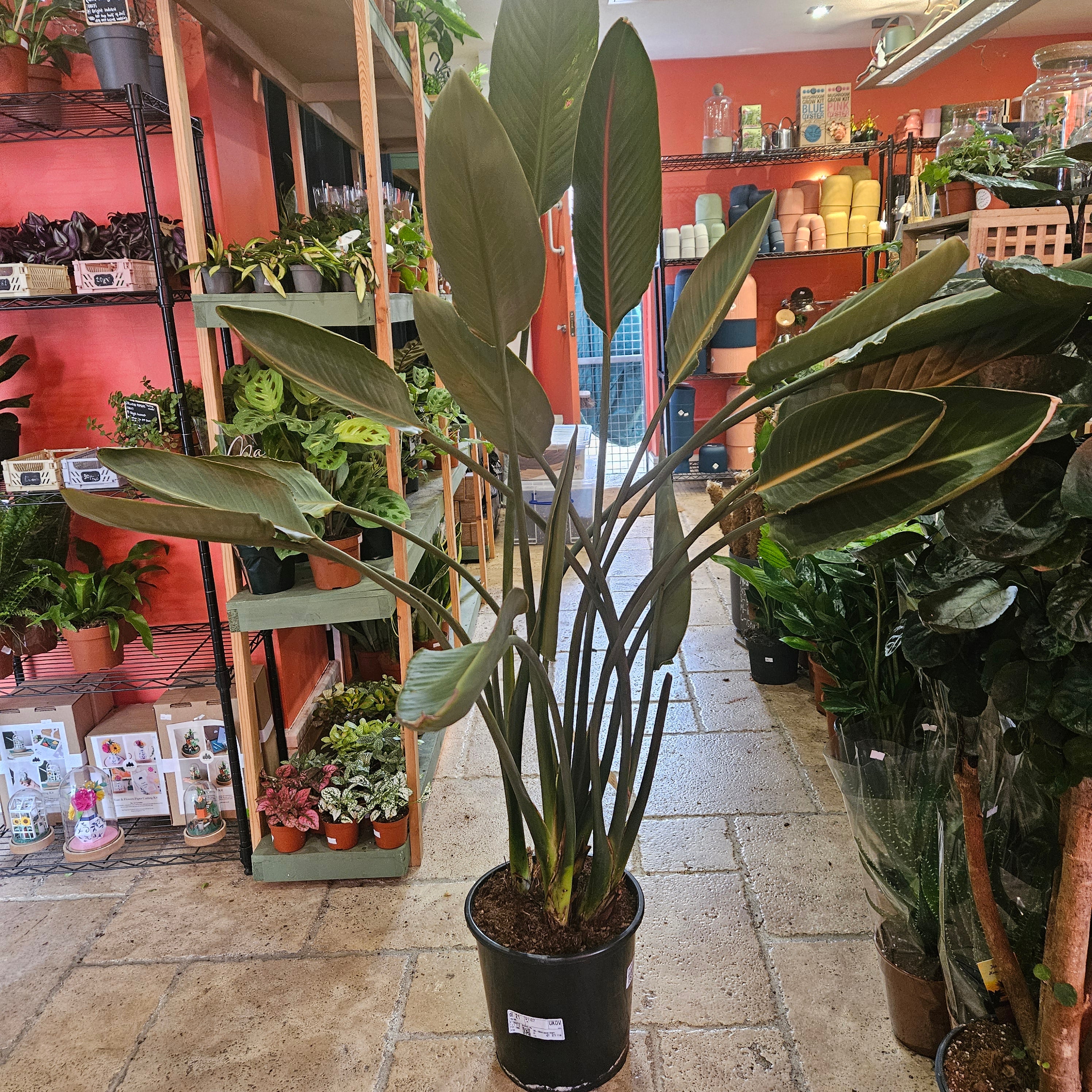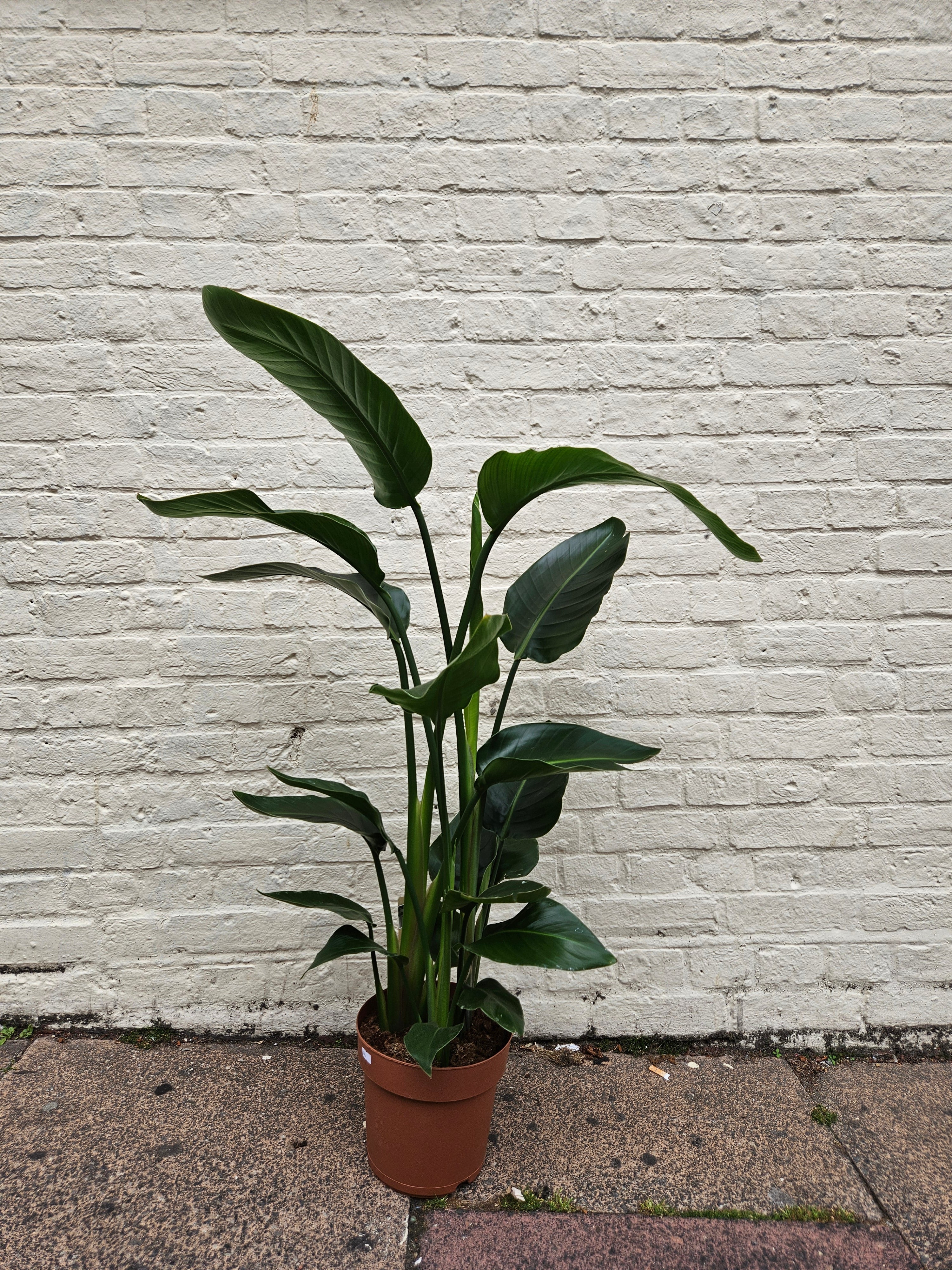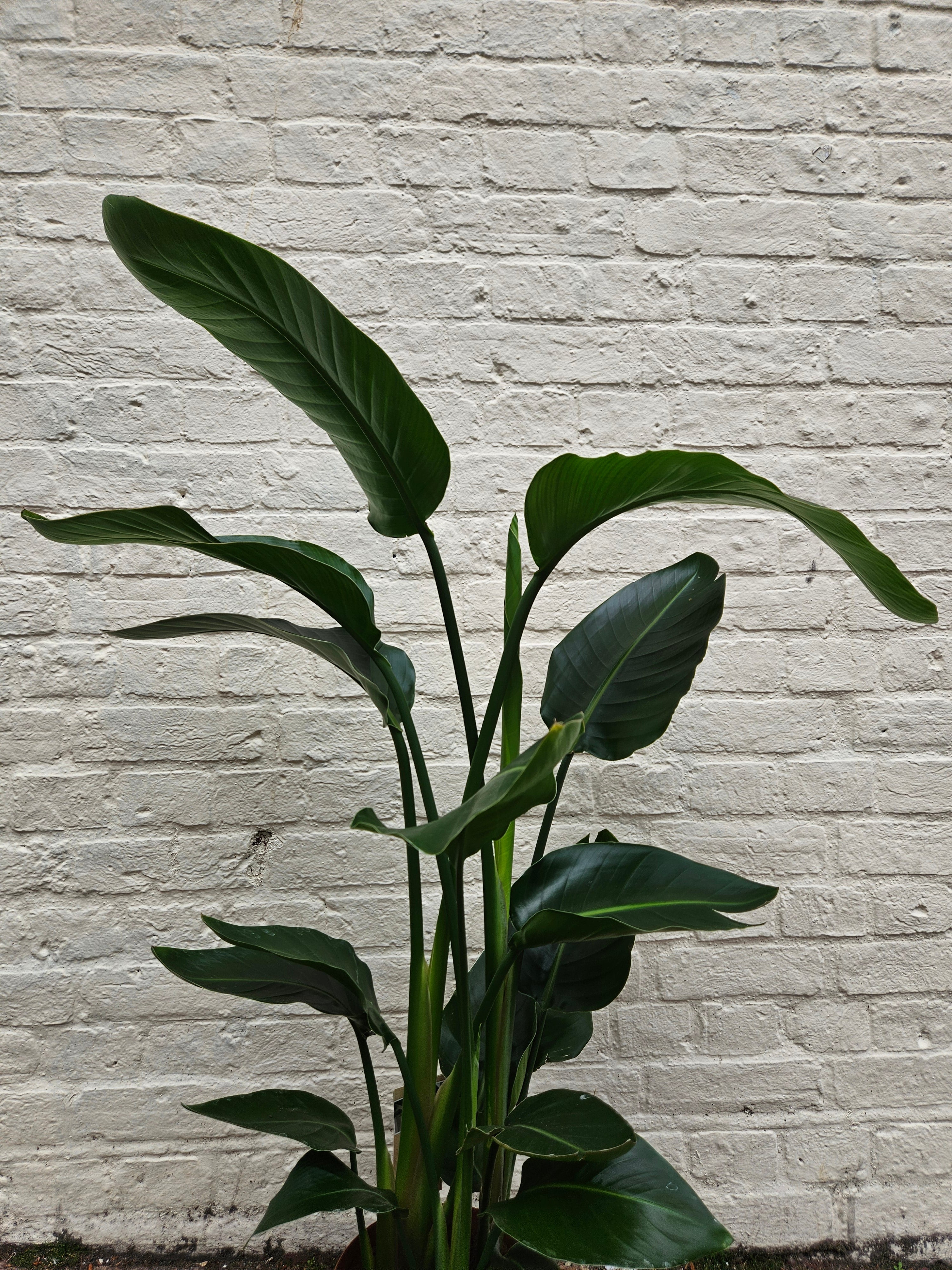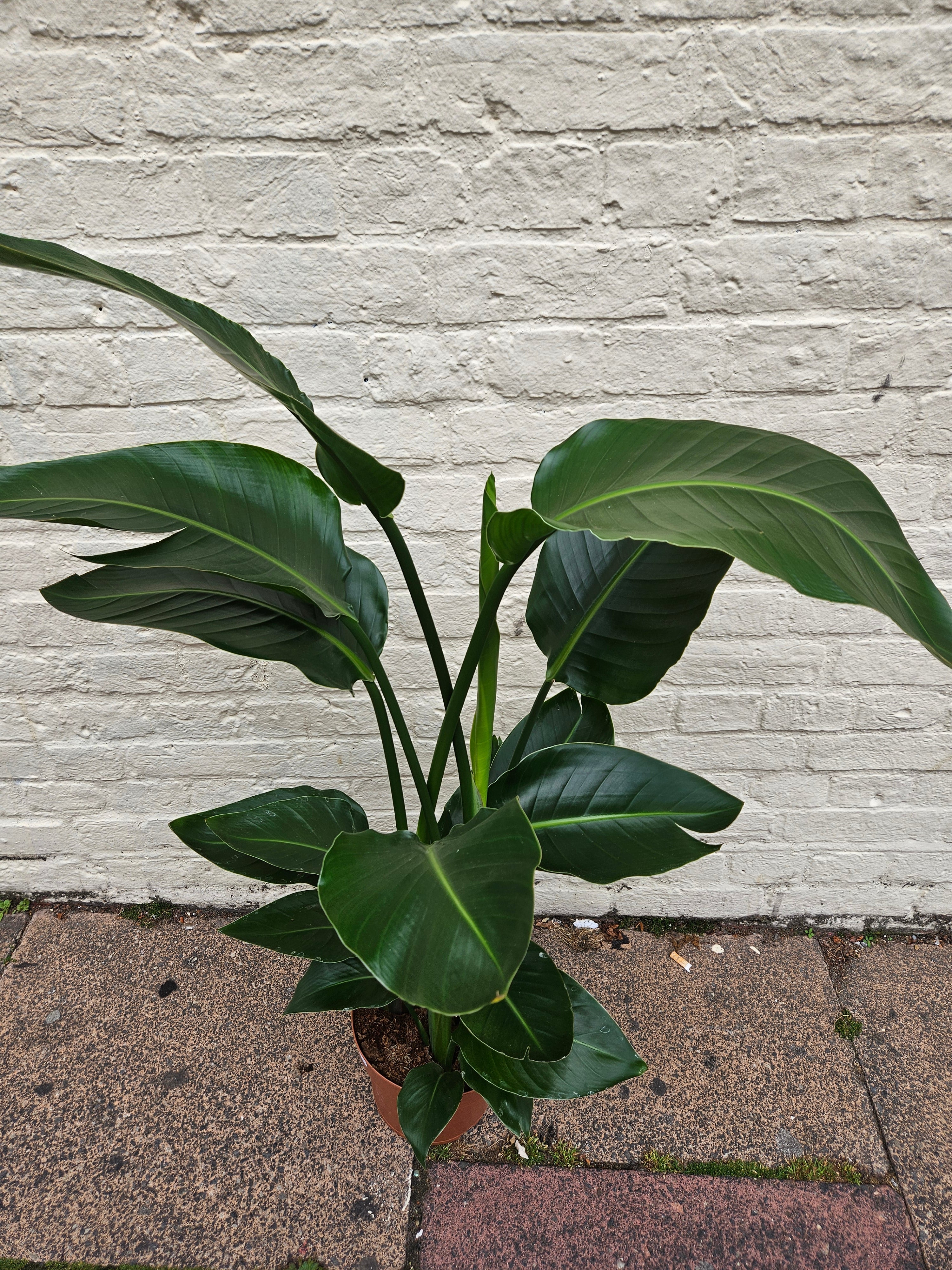Welcome to the ultimate Bird of Paradise care guide! The majestic Strelitzia, often called the Bird of Paradise, is a show-stopping tropical houseplant known for its lush, glossy, paddle-shaped leaves and striking, bird-like flowers.
Whether you're a green-thumbed pro or a curious beginner, this guide has everything you need to transform your Strelitzia into the star of your indoor jungle. From light and watering tips to fertilizing and beyond, let's dive in and help your Bird of Paradise thrive like never before!
If ordinary plants just won't do, dive into our world of extraordinary! Discover our curated selection of exotic houseplants that are anything but basic.
Bird of Paradise Overview
Strelitzias belong to the Strelitziaceae family which typically grow in subtropical regions of South Africa in areas such as Cape Provinces and KwaZulu-Natal where it is an important nectar source for birds which help to pollinate the plant.
These plants are loved for their beautiful flowers which resemble a bird of paradise. There are two commonly found varieties of strelitzia:

The first is the Strelitzia nicolai, which is also known as a White Bird of Paradise due to its beautiful white and blue flowers that emerge from beak-like blackish spathes.

Secondly, we have the Strelitzia Reginae known as an Orange Bird of Paradise. As the name suggests it produces orange and blue flowers in the shape of the bird's beak and head.
Birds of Paradise plants need to be between three and six years old to start flowering and will produce flowers from April to June. Often mistaken for a banana plant they are actually different plants but do however belong to the same order, the Zingiberales.
The Strelitzia was named after the British Queen Charlotte of Mecklenburg-Strelitz after it was introduced to Britain in Kew Gardens in 1773.
Ideally, as long as the room is brightly lit, your Bird of Paradise would be the perfect addition to any room in your house.
How to Look After a Strelitzia (Bird of Paradise)
Light:
For best results pop in a spot where it will receive bright light, ideally with several hours of direct light per day. They will thrive in conservatories, or by a south-facing window or conservatory.
If placed in a shadier spot you may reduce the amount of flowers it produces and it may not produce any at all. If you have a younger plant then place it in a bright but indirect spot as these younger leaves can burn more easily.
Temperature and Humidity:
Birds of Paradise prefer temperatures between 18°C - 21°C. Avoid exposing them to extreme temperature fluctuations or cold drafts, it will be hard to recover if this plant gets too cold.
Strelitzias also prefer high-humidity environments. Mist around the leaves occasionally or place a tray of pebbles with water beneath the plant to increase humidity levels or use a humidifier. Be mindful of placing your plant near air-conditioning vents or heaters, as these can cause dryness and browning tips.
Watering:
Bird of Paradise plants do not like to be sitting in a pool of water. Let the top inch or two of the soil dry out before watering, soil should feel dry if you push your finger into the soil. Wait till you can see water coming out the drainage holes and chuck any excess away.
Keep the soil moist but not waterlogged. Watering should be reduced further in winter months to avoid root rot. Make sure to always use lukewarm water as Strelitzias can be sensitive to temperature changes and this could damage the roots.
Overwatering is one of the biggest reasons for an unhealthy Strelitzia and can cause rapidly yellowing leaves.
Fertilising:
A Bird of paradise enjoys a feed every 2 weeks during the growing season (spring-summer). As a general rule don't feed in winter or just after a repot. Follow the instructions on the fertiliser packaging for proper application. We sell an organic pure seaweed extract that when diluted is a great feed for plants including Strelitzias.
How to Re-pot a Bird of Paradise
Strelitzias will only need a re-pot when they get too big for their current pot and roots are coming out the bottom or you can see them at the top of the pot (this can be every year for a smaller plant). For large plants they can often do well slightly rootbound and this also encourages blooms. Sometimes you can even just refresh the topsoil with larger plants.
Before a re-pot, it is best to give the plant water 24 hours before to avoid transplant shock. Spring is the best time to repot, as the plant is actively growing, try to avoid repotting plants in winter.
- Choose a pot that is one or two sizes larger than the current one, ensuring it has drainage holes at the bottom.
- Carefully remove the Strelitzia from its current pot, gently loosening the root ball.
- Place it in the new pot and add fresh, well-draining potting mix around the roots.
- Gently press the soil to ensure the roots are bedded in. Avoid pressing too hard on the soil as this can cause it to compact.
- Water the plant thoroughly after repotting.
How to Propagate a Bird of Paradise
Propagating a Bird of Paradise is an exciting way to grow new plants and can be done by seed of division - we will be explaining the latter. Follow these steps:
- Choose a Healthy Shoot: Select a side shoot off the main plant with a few leaves and a healthy root system.
- Remove the shoot: Use a clean, sharp knife to divide the roots/rhizomes.
- Re-pot: Place the cutting in a new container with fresh well-draining soil and pop in a warm but bright indirect spot.
- Re-position: Once your shoot has adapted to its new pot you can move to a brighter spot.
How to Prune a Bird of Paradise
Pruning your Bird of Paradise helps maintain its shape and encourages healthy growth. Trim yellow or brown leaves or damaged leaves, as well as leggy stems. Make clean cuts. Flowers can bloom for up to 3 weeks and will drop their petals.
How to Take a Cutting from a Bird of Paradise
Taking cuttings for propagation follows a similar process as mentioned earlier. Ensure you choose a healthy shoot growing from the main plant, make a clean cut, and follow the propagation steps.
How Often Should I Water a Bird of Paradise
Watering frequency depends on various factors like humidity, temperature, and pot size. As a general rule, check the soil and water when the top inch or two of the soil is dry. Water less in winter and more frequently during the growing season. Plants in shadier locations will need less water than those in brighter spots.
Why Are My Bird of Paradise Leaves Going Yellow/Brown/Splitting/Curling?
- Yellow Leaves: Yellowing leaves can result from overwatering or underwatering, poor drainage, or too much direct sunlight. Adjust your watering and lighting conditions accordingly. If the leaves are yellowing closest to the plant it is most likely to be due to overwatering, check the roots for rot and re-pot if necessary.
- Brown Leaves: Brown edges or spots may indicate low humidity, underwatering or overwatering, or too much direct sunlight. Increase humidity and adjust your watering routine. Too much warmth, for example, if the plant is next to a radiator, can cause brown leaves that dry up.
- Splitting leaves: Splitting leaves is an adaptation that allows wind to pass through the plant without breaking the leaves. It can also happen if people brush past it, but it is normal and nothing to worry about!
- Curling Leaves: Curling leaves can be a sign of underwatering, or over-watering Curling inwards indicates too little water and too much sun. Pointing downwards and curling indicate too much water. Ensure proper watering. Temperature change can also cause the leaves to curl.
Are Birds of Paradise Poisonous to Cats and Dogs?
Yes, a Bird of Paradise plant is toxic to humans and pets if ingested. Keep them out of
reach of children and pets to prevent accidental consumption. If ingested, seek medical attention immediately as it can cause irritation, vomiting and diarrhoea.
With these expert tips, you're well-equipped to care for your Bird of Paradise! Happy growing!






